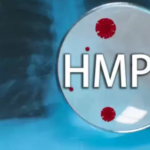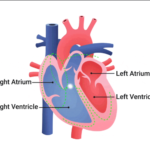A kidney stent is a hollow tube used to remove uncomfortable kidney stones.
By the end of 2022, Pooja DP, a 25-year-old homemaker from Mandya, Karnataka, began experiencing frequent fevers. She endured this condition for seven months before an ultrasound revealed that she had ureteral stones. She underwent a treatment to insert a ureteral stent, also known as a kidney stent, in order for the kidney stones to flow out, as recommended by the specialists.
She underwent a laser lithotripsy surgery in May 2023, which removes kidney, bladder, urethral, and ureteral stones by shattering them into minute pieces. For a month and a half, she was placed on a ureteral stent. I felt no belly ache or discomfort, Pooja remarked in a statement to Happiest Health. We performed several tests since I had a persistent fever.
What is a kidney stent?

Also read-5 Items To Avoid If You Want To Maintain Heart Health
Kidney Stent
Stent is a soft, hollow, thin tube placed inside the ureter. The tube connects kidneys to the bladder for urine flow so as to allow the kidney stones to drain out or when an infection is present affecting the kidneys to work adequately. “The stent is placed through a procedure from the bladder to the kidney through the ureter tunnel. The stent is also referred to as JJ stent due to its shape,” says Dr Sanjeev Kumar Hiremath, chief nephrologist, Sagar Hospitals, Bengaluru.
Ureter stent is a safety mechanism used to ensure that the tube isn’t blocked and doesn’t affect the urine flow from the kidney, says Dr D Venkat Subramaniam, executive director and senior consultant urologist, Asian Institute of Nephrology and Urology, Chennai. “Whenever a stone is stuck in the ureter for a long time, it damages the tube causing edema (inflammation of the ureter) which can cause pain and infection. The stent is placed in either one or both the ureters depending on whether one kidney is affected or both,” he said.
What are kidney stents used for?

According to Dr. Subramaniam, it is frequently utilized to treat kidney stones but is also used for any urological endoscopic operation or reconstructive surgery involving the urinary tract. “Stents are inserted when an antibiotic-resistant serious kidney infection occurs. In rare cases of advanced malignancy, the kidneys might become externally compressed, leading to renal failure. When the tube is obstructed, the creatinine will be high, making chemotherapy impossible for those who have cancer. Stents can then assist in enhancing kidney function, the doctor explained.
Made of silicon or plastic, adult kidney stents are between 24cm and 26cm in length and 1mm-2mm in diameter. Pediatric stents are 15cm to 20cm in length. There are two types of stents – short-term and long-term stents. “In cases of kidney stones, blood clots, and severe infections, the stents are placed for a temporary period of four to six weeks. While in cases of chemotherapy, they require it for a longer period of 6 months or more than a year,” said Dr Hiremath.
In 90% of cases, the stent is placed through a cystoscopy procedure where the stent is placed in the retrograde setting (backward), says Dr Subramaniam. “The person will be put on anesthesia and the device is inserted from the urinary passage to the kidneys. In very few cases where the surgery is performed on the kidney, the stents are placed in an antegrade setting where the stent is placed from the kidney to the bladder,” he explained.
How does it feel?

Most of them don’t feel the presence of the stent inside their body, says Dr Hiremath. “First one or two days after insertion of the stent, they may feel slight discomfort as the tip of the stent is placed in the bladder causing irritation and may have the urge to pass urine. They may also notice blood in the urine, but it stops after 48 hours,” he said.
Pooja was admitted to the hospital for a day and felt a burning sensation while passing urine for up to 10 days. “There was slight pain which disappeared after 10 days and I couldn’t feel its presence inside,” she said.
Kidney stent removal

The stent is removed in the same cystoscopy procedure and the person won’t have any irritation after that, says Dr Subramaniam. “Once the person has recovered and there’s no inflammation or infection, the stent is removed. The temporary stents must be removed at the stipulated time and leaving them longer will cause harm. The short-term stents are made of a different material which won’t last for longer than six months and are removed within that period,” he said.
Takeaways
- Kidney stents are mostly placed through a cystoscopy procedure where it is inserted from the urinary passage. It travels from the bladder to the kidney.
- In some cases where the surgery is performed on the kidney, the stents are placed from the kidney to the bladder.
- It is placed in the ureter tube to prevent inflammation of the ureter and is mostly used in kidney stones.
- Kidney or Ureter stents are also known as JJ stents due to their shape.
Also read-Five Things To Focus On For Losing Weight After Pregnancy
images source-google




































